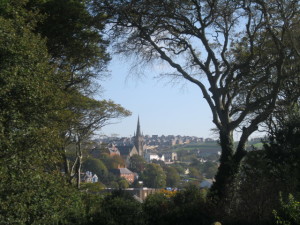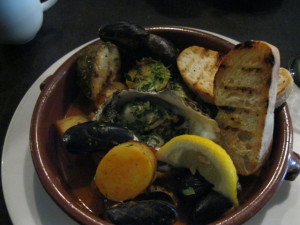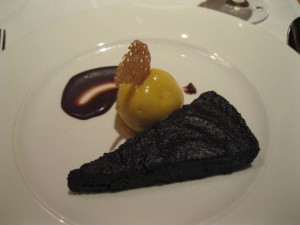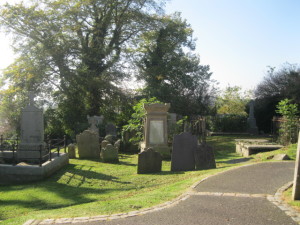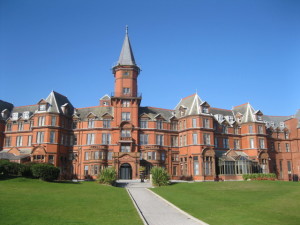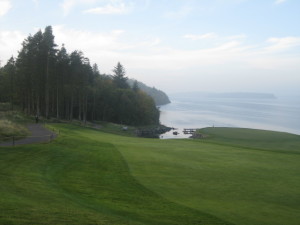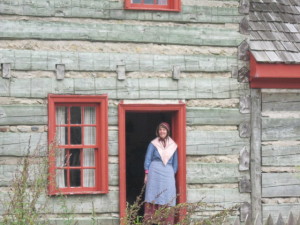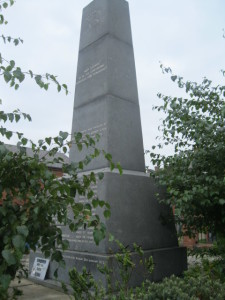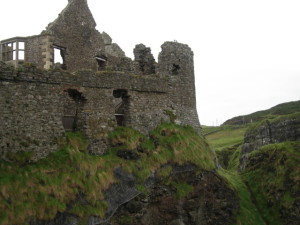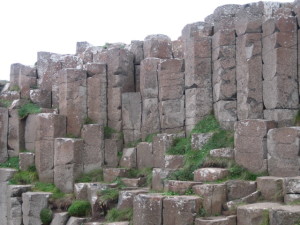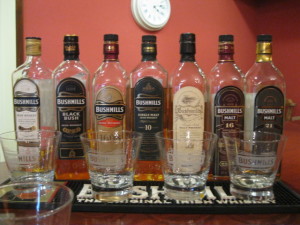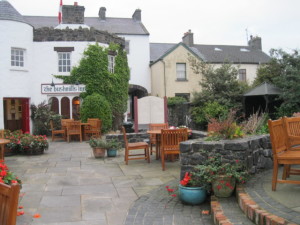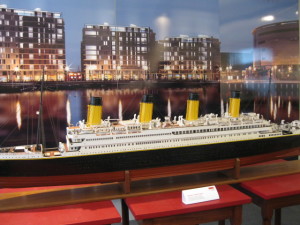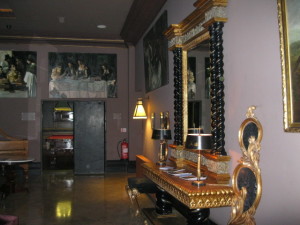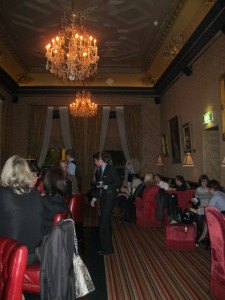They say that Irish eyes are smiling, and so are those of people from other cultures who have the opportunity to visit the beautiful Emerald Isle.
The St. Patrick’s Day season is the perfect time to take a look at planning a visit. And for us, well, we’re excited about a return trip after an incredible week-long journey through Northern Ireland.
We arrived in Belfast on an overnight Continental Airlines flight from Newark international Airport. Continental is the only airline offering nonstop service to Belfast from the East Coast.
Warm, Irish-style hospitality was the first thing to greet us as we checked into The Europa Hotel on Great Victoria Street. Although our rooms weren’t ready, we were comfortably ensconced in an upstairs piano bar and plied with coffee, orange juice and scones as we waited—tended to by courteous service from the staff.
Who had time to sleep when there was so much to see and do, starting, naturally, with lunch, because we had to get on the local schedule right away. We were directed to the nearby Mourne Seafood Bar, which reminded us of a restaurant you might find in New York’s East Village or Soho, and dove into a delicious bouillabaisse-style seafood soup brimming with plump mussels, oysters and new potatoes.
After a brisk walk back to the hotel, we caved in to jet lag from the redeye flight and decided to take a brief respite before getting ready for dinner at the acclaimed Fitzwilliam Hotel, just several blocks away from the Europa.
No story about Northern Ireland would be complete without mentioning “the troubles,” which have long since died down, but are very fresh in people’s memories and still a topic of conversation. We were told that the Europa was the most bombed hotel in Belfast. But rest assured there is absolutely no evidence of that these days.
Dinner at the second floor restaurant of the Fitzwilliam was lovely, with the main course being a beautiful piece of grilled salmon. The hotel is ultra-modern and sleek and downstairs is a lively, upscale bar, where we couldn’t resist having a nightcap.
The next morning we hit the road to County Downpatrick and toured the St. Patrick’s Centre, with its magnificent history, telling the story of Ireland’s patron saint and exploring his ancient and modern legacy. State of the art multimedia displays are used to recall the saint’s story in his own words. It’s quite the educational experience, with tours of local schoolchildren passing through the beautiful cathedral and its grounds, where St. Patrick’s grave is enshrined.
Our next stop was checking in at the historic Slieve Donard, a magnificent Victorian seaside hotel in a quaint town at the foot of the Mourne Mountains that boasts a unique spa nearby, called Soak Seaweed. And that’s exactly what you do there, soak in a bath of seaweed, rich with minerals and warm sea water that detoxifies your body and enriches your skin, leaving you feeling like a million bucks—or pounds, as is the currency in Northern Ireland. The treatment is completed with an invigorating freshwater jet spa shower. After that you’re ready for anything.
It made us hungry, and so it was on to dinner at the Slieve’s splendid dining room. You soon learn that the cuisine of Northern Ireland is based on the bounty of products farmed locally. The beef, lamb, chicken and fish that we tried were outstanding. If you’re a vegetarian, you’ll be quite pleased with the quality of the options available from locally-grown produce.
The Slieve is also known as a premier golf hotel, sitting right next to the acclaimed links of the Royal County Down course, and other golf courses are within easy driving distance.
On the road again for Newcastle, we stopped at the Priory Cottages, where craftspeople ply their trades and sell their handiwork to visitors. We saw potters spinning pieces on their wheels and basket weavers using local reeds at this unique arts center.
Scotland may be better known as a golfer’s paradise, but Northern Ireland is a close runner-up—exemplified by the magnificent championship courses at Lough Erne resort in Fermanagh outside Enniskillen. The grounds offer some of the best scenery you’ll find, from verdant hills to craggy coastline. Brush up on your game at the Nick Faldo Golf Academy here before hitting the beautiful greens.
The resort, set on its very own 600 acre peninsula, between Castle Hume Lough and Lower Lough Erne, boasts five-star accommodations, with 120 rooms and suites, and gourmet dining at its Catalina restaurant. There are four other casual dining options on the property. When you’re not golfing, you can swim, soak, relax and get massaged at the Thai spa.
From the luxurious present to the hardships of the past, the next day brings a visit to the Ulster American Folk Park, an incredible indoor/outdoor living museum that tells the story of Irish emigration to America during the eighteenth and nineteenth centuries.
You’ll travel back to those times in a replica of a town, complete with a bank, printing press and a general store with goods sold during the period. The foliage-filled grounds feature thatched roof homes adorned with period furniture and china with informative park stewards dressed in period costumes.
One such building on the museum grounds is the Fulton Stone House. It was the home of Samuel Fulton, who emigrated from County Donegal in Ireland in the early 1700s to settle in the township of Donegal Springs in Lancaster County, Pennsylvania. Acquired in 1997, the house was dismantled stone by stone and shipped to the museum, where it was rebuilt and furnished with artifacts from the era.
The Folk Park also allows visitors to experience the cramped conditions on an emigrant sailing ship and the log cabins on the American Frontier. Be sure to leave ample time to visit this, one of Northern Ireland’s national museums.
We experienced more history in the city of Derry, or Londonderry, taking a guided tour of the 17th century city walls, built between 1614 and 1619, which are almost perfectly preserved, and provide a 360-degree view of the city and surrounding countryside.
Derry was the site of the infamous 1972 Bloody Sunday massacre, commemorated by U2 in its song “Sunday Bloody Sunday.” It’s a must to visit the memorial to the 14 unarmed civilians who were killed in the shootings when British paratroopers opened fire on a civil rights rally in the Bogside area of the city.
Massive murals on nearby buildings also commemorate key players of the troubles between Protestants and Catholics, which began in the late 1960s and still reverberate to this day.
But politics are pushed to the backseat as one travels the Causeway Coastal Route, a breathtaking scenic journey through picturesque hills, waterfalls and cliffs. You’re back in the 16th century again at the medieval Dunluce Castle, a series of awe-inspiring roofless ruins perched 100 feet above the sea atop a basalt rock cliff on the north Antrim coast. When it was built, the castle was an impressive stronghold fit for a king. Local legend has it that part of the castle fell into the sea one night in 1639, taking with it the kitchen and some guests gathered for a wedding.
Onward to another spectacular site: The Giant’s Causeway, declared a World Heritage Site in 1986 because of its outstanding geology. As a result of volcanic activity 60 million years ago, 38,000 columns remain its legacy today. Most of them are hexagonal, and the tallest stand about 36 feet high. Many of the formations have been named due to their shapes and their part in the legend of Giant Finn MacCool, who, as the story goes, created the causeway as a challenge to his Scottish rival, Benandonner.
You’ll want to walk across some of the stones, but be careful because they’re uneven and waves break on them, creating slippery conditions. There’s also the possibility of falling rocks from the cliffs. The entire area, named the fourth greatest natural wonder in the UK, is a protected habitat for local wildlife and birds and is the most-visited attraction in Northern Ireland.
Speaking of attractions, it’s amazing we’ve gotten this far without mentioning famous Irish whiskey, and that’s what you’ll enjoy in the nearby town of Bushmills, home of a renowned distillery—the oldest licensed one in Ireland, going back to 1608. But whiskey was made in this region for at least a century before that, and the art of distillation has been passed down through the generations, reflecting the commitment and passion for whiskey-making in this region.
Whiskeys produced at Old Bushmills are made from the finest natural ingredients—barley, malt, yeast and pure, clear water. Unlike Scotch, there is no smoky peaty taste in these brews. The ingredients are fermented, distilled three times and then matured in oak casks, stored for years in dark, aromatic warehouses where the master distiller regularly assesses the taste. When he’s happy, he assembles precise quantities from different casks in large vats, which are then allowed to marry for awhile before the final process, bottling.
Although the entire process is quite visual, no photography is allowed inside the distillery.
An exclusive blend is available only to visitors of the distillery, the Reserve 12 Year Old Single Irish Malt Whiskey, which can be personalized with a special label. Tasting flights are also available to visitors, so one can compare Scotch whisky and Irish whiskey of various ages.
We recommend lunch at Tartine at the Distillers Arms nearby. Choose from entrees including roast cod with tempura langoustines, juniper marinated venison and saltimbocca of chicken with fusilli pasta. If you have room for dessert, go for the yummy Baileys crème brulee with shortbread and mixed berry compote or the sticky toffee pudding with honeycomb ice cream.
In keeping with the distillery theme, there’s no more charming place to stay in town than Bushmills Inn on Main Street, a lovely country inn that features a top-notch restaurant and cozy bar.
It’s time to leave the country for the city and our much-anticipated stay at the Merchant Hotel in Belfast. But first, a don’t-miss excursion to the Titanic Dock and Pump House. Yes, this is the place where the infamous White Star Liner was built, and where you will see the only intact piece of the great ship’s legacy. Inside the century-old pump house is a visitor center with a full audio-visual experience that takes you through the history of shipbuilding in Belfast from the 1600s to the launch of the Titanic.
Unchanged since 1911, you’ll experience the sheer physical size of the Titanic. As they like to say in these parts, “She was alright when she left here.” Two sister ships were designed, built and launched from right here as well. Charter boat tours of the docks are also available.
We had one final night to spend in Belfast, and were thrilled that it was at the Merchant Hotel, probably the only place in the world that blends sleek Art Deco modernity and Victorian grandeur. There are two wings, housing guests in 5-star luxury in each of those two very distinct styles, depending on your taste, your mood—and how booked your first choice is. We had a Victorian suite outfitted with luxe period furniture and lighting, with beautiful bay windows overlooking the street.
Located in the heart of Belfast’s historic Cathedral District, the Merchant’s amenities include a rooftop spa—and there’s nothing like hanging out in a sauna with a view of the city—plus a fabulous jazz bar, Bert’s, that’s one of the city’s hotspots, along with a renowned restaurant, the Great Room, where you can dine under a magnificent, huge Irish crystal chandelier. This hotel has it all.
Contacts:
Europa Hotal
http://www.hastingshotels.com/europa-belfast
Saint Patrick Centre
53A Lower Market Street
Downpatrick
BT30 6LZ
T: +00 44 (0) 28 4461 9000
Down Cathedral & St Patrick’s Grave
English Street
Downpatrick
T: +00 44 (0) 28 4461 4922
Slieve Donard Resort & Spa
www.hastingshotels.com/slieve-donard-resort-and-spa
Lough Erne Resort
Ulster American Folk Park
Guided Walking Tour of the 17th Century Derry City Walls & St Columb’s Cathedral
Dunluce Castle
87 Dunluce Road
Bushmills
County Antrim
BT57 8UY
T: + 44 (0) 28 2073 1938
W: www.ehsni.gov.uk
Old Bushmills Distillery
The Distillery
2 Distillery Rd, Bushmills, County Antrim BT57 8XH, United Kingdom
Bushmills Inn
9 Dunluce Rd
Bushmills, County Antrim BT57 8QG, United Kingdom
Titanic Quarter
Merchant Hotel
16 Warning Street
Belfast, County Antrim BT1 2DY, United Kingdom
Northern Ireland Tourist Board

